Centauri Dreams
Imagining and Planning Interstellar Exploration
Glimpses of Ganymede
Have a look at Ganymede as seen by the Juno spacecraft on December 26, 2019, the day after Christmas (and a day and time that now seems impossibly distant given all that has been going on closer to home). Jupiter’s largest moon is also the largest satellite in the Solar System, bigger even than Titan, and 26% larger than the planet Mercury, though far less massive. Our view comes courtesy of Juno’s Jovian Infrared Auroral Mapper (JIRAM) instrument.
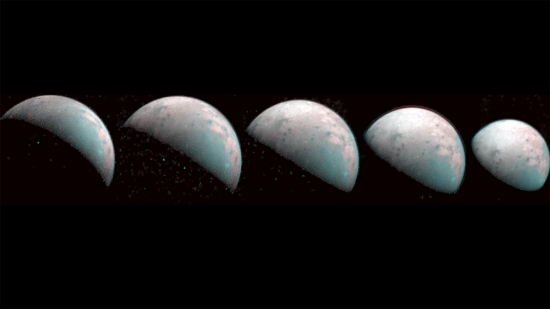
Image: These images were taken by the JIRAM instrument aboard NASA’s Juno spacecraft on Dec. 26, 2019, providing the first infrared mapping of Ganymede’s northern frontier. Frozen water molecules detected at both poles have no appreciable order to their arrangement and a different infrared signature than ice at the equator. Credit: NASA/JPL-Caltech/SwRI/ASI/INAF/JIRAM.
Three-quarters the size of Mars, Ganymede began turning up in science fiction early in that genre’s development, as in Stanley Weinbaum’s “Tidal Moon,” which ran in the December, 1938 issue of Thrilling Wonder Stories. Begun by Weinbaum and finished by his sister after his death, the tale depicts a surreal, warm Ganymede, a world of large oceans with massive tidal effects causing global flooding. These days we put a lot of emphasis on Jupiter’s tidal squeeze as we consider energy sources for maintaining Europa’s ocean. Ganymede, too, is thought to contain an internal ocean, with terrain features showing disruption by tidal heating.
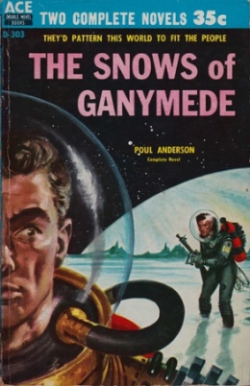
Robert Heinlein’s 1953 novel Farmer in the Sky involves a terraformed and colonized Ganymede, and my personal favorite is Poul Anderson’s The Snows of Ganymede (1954), mostly because it triggers memories of a battered Ace Double, though it’s an otherwise negligible fragment of a great writer’s work. But I’d better stop there — references to the moon in fiction could go on for some time.
Image: Originally published in Startling Stories in 1955, Poul Anderson’s novella appeared as one half of an Ace Double in 1958.
Although the place is less hospitable than depicted in early stories, Ganymede has lost none of its scientific interest. This is the only moon in the Solar System with its own magnetic field, which produces interesting effects at the poles, bombarded as they are by plasma from Jupiter’s vast magnetosphere.
Alessandro Mura is a Juno co-investigator at the National Institute for Astrophysics in Rome:
“The JIRAM data show the ice at and surrounding Ganymede’s north pole has been modified by the precipitation of plasma. It is a phenomenon that we have been able to learn about for the first time with Juno because we are able to see the north pole in its entirety.”
What’s happening here is that Ganymede’s magnetic field lines draw charged particles along them to the poles, disrupting the crystalline structure of the ice. The phenomenon can be tracked because such ‘amorphous ice’ shows a different infrared signature than the crystalline ice found at the moon’s equator. Although designed for infrared studies below Jupiter’s cloud tops, JIRAM has proven effective for studying the Galilean moons whenever JUNO makes a fortuitous pass. The instrument collected 300 infrared images on this flyby, with a closest approach of roughly 100,000 kilometers. The spatial resolution is 23 kilometers per pixel.
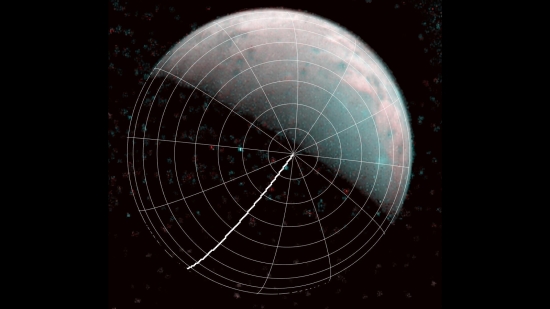
Image: The north pole of Ganymede can be seen in the center of this annotated image taken by the JIRAM infrared imager aboard NASA’s Juno spacecraft on Dec. 26, 2019. The thick line is 0-degrees longitude. Credit: NASA/JPL-Caltech/SwRI/ASI/INAF/JIRAM.
Our knowledge of Ganymede is going to skyrocket in 2030, when the European Space Agency’s JUpiter ICy moons Explorer mission begins its observations. After flybys of Callisto and Europa, JUICE will enter an elliptical orbit around Ganymede. Launch is scheduled for 2022.

A Directly Imaged Multi-Planet System around a Sun-like Star
At this point in the exoplanet hunt, actual images of our quarry are uncommon, but few more so than today’s image, made with the European Southern Observatory’s Very Large Telescope. This is being billed as the first image ever taken of a young Sun-like star accompanied by multiple planets, in this case two gas giants. And I do mean young: At 17 million years old, this star has spawned planets recently enough that their hot glow makes the image possible.
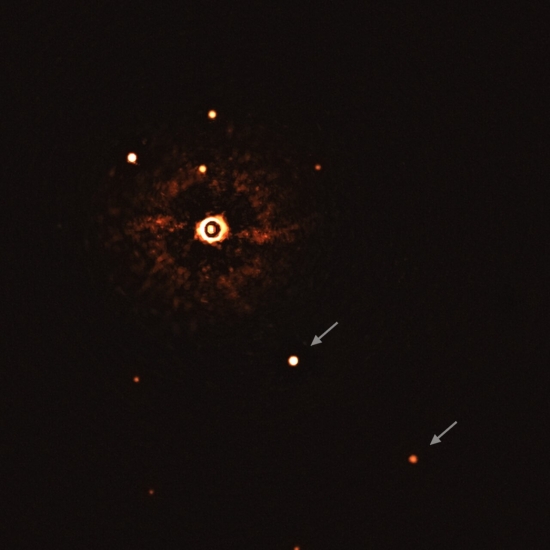
Image: First ever image of a multi-planet system around a Sun-like star. The arrows point to the planets; the other bright objects are background stars. Credit: European Southern Observatory.
Designated TYC 8998-760-1, the host star is some 300 light years away in the southern constellation of Musca (The Fly), with a mass close to that of the Sun, described in the paper on this work as a solar analogue. The two gas giants orbit the star at 160 and 320 AU, and both are more massive than our Jupiter and Saturn, with the inner planet at 14 times Jupiter’s mass and the outer at six times Jupiter’s mass. The youth of the system suggests what our Solar System may have been like early in its formation. Did these gas giants migrate to their current position, or did they form in place?
The answer would depend on the various values for the eccentricities of their orbits, which the authors can vary in their calculations to produce stable orbits on billion-year timescales if the eccentricity is low (near-circular orbits), and a chaotic system with likely future interactions between the planets if the eccentricity is high. It will take further observations to make the call. Young systems like these should prove useful for analyzing both scenarios around other stars, as the authors note, while also pointing to the opportunities for future observation from space:
TYC 8998-760-1 is a prime system to further study the dynamical and chemical properties of two coeval, gravitationally bound, gas giant planets. Continuous astrometric monitoring will constrain the orbital solutions for both companions and thus enable testing of potential formation scenarios. Due to the wide separations of both companions, contaminating flux from the primary is negligible, so spectral characterization at high resolution is easily accessible to determine rotational periods and molecular abundances in the planetary atmospheres… Multi-wavelength photometric variability monitoring with space-based observatories such as HST and JWST… will facilitate studies of the vertical cloud structures in these Jovian companions. Even mid-infrared spectroscopy with JWST/MIRI will be feasible to provide benchmark spectra for theoretical atmosphere models of young, sub-stellar companions at wavelengths longer than 5 microns.
We’ve seen the number of directly imaged worlds increasing because of imagers that use adaptive optics, like the Gemini Planet Imager (GPI) and the Spectro-Polarimetric High-contrast Exoplanet REsearch (SPHERE) instrument. The image above is from SPHERE, mounted on the VLT in Chile, which operates at highest contrast at optical and near-infrared wavelengths.

Image: Location of TYC 8998-760-1 in the constellation of Musca. Credit: ESO.
The other two exoplanet systems currently in our catalog with two or more directly imaged planets both involve stars considerably different from the Sun. One of them is found at HR 8799, a 30 million year old star in spectral class A5, with four giant planets orbiting between 15 and 70 AU from their host. The other, at PDS 70, is a K7-class star that is even younger, with an age estimated at 5.4 million years and two accreting protoplanets inside the circumstellar disk.
The paper is Bohn et al., “Two Directly Imaged, Wide-orbit Giant Planets around the Young, Solar Analog TYC 8998-760-1,” Astrophysical Journal Letters Volume 898, Number 1 (22 July 2020). Abstract.

A Population of Interstellar Asteroids?
It was hard enough to find ‘Oumuamua, the first object on an interstellar trajectory discovered within our own Solar System. The emergence of new resources like the Large Synoptic Survey Telescope (LSST) should help us develop a preliminary catalog of such interlopers, thought to be not uncommon if we can identify them. But tracking down objects that wandered from one star to another and found their way into residence in our system is another matter entirely.
In April we looked at a study of an unusual set of Centaurs, asteroids whose orbit perpendicular to the orbital plane of the planets and other asteroids raises questions about their origin. A letter to Monthly Notices of the Royal Astronomical Society had appeared, written by Fathi Namouni (Observatoire de la Côte d’Azur, France) and Maria Helena Moreira Morais (Universidade Estadual Paulista, Brazil). The scientists identified what seems to be a population of asteroids that were probably drawn into the Sun’s gravitational pull at the time of the Solar System’s formation, when the Sun’s birth cluster stars would still be nearby. See Identifying Asteroids from Other Stars for a preliminary look at the idea.
The study has now been expanded and appears as a full paper in the same journal, calling renewed attention to the dynamical evolution of this particular branch of the Centaur family. Let’s quickly note that not all Centaurs fit into parameters implying an interstellar origin. Similar to asteroids in size but likely icy in composition, most Centaurs revolve in relatively unexceptional but ultimately unstable orbits in the outer Solar System between Jupiter and Neptune.
Namouni and Morais are interested in the small number of high-inclination Centaurs — and a few at lower inclination — whose computed orbital history points to an origin far from home. The subsequent orbits of these objects may be more stable than we have realized. Says Morais:
“The Solar System formed 4.5 billion years ago in a stellar nursery, with its systems of planets and asteroids. The stars were close enough to each other to foster strong gravitational interactions that led to an exchange of material among the systems. Some objects now in the Solar System must therefore have formed around other stars. Until recently, however, we couldn’t distinguish between captured interstellar objects and objects that formed around the Sun. The first identification was made by us in 2018.”
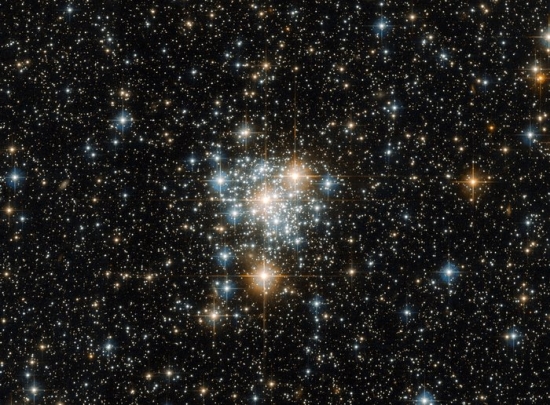
Image: NGC 299 is an open star cluster of a kind similar to the one that produced the Sun, located within the Small Magellanic Cloud. Open clusters are weakly bound collections of stars, all formed from the same massive molecular cloud of gas and dust. Because of this, all the stars have the same age and composition, but vary in mass because they formed at different positions within the cloud. In the close conditions of such a birth cluster, comets and asteroids may have moved readily from star to star. Image credit: ESA/Hubble & NASA.
The object Morais talks about as the duo’s first detection is a retrograde co-orbital asteroid of Jupiter called (514107) Ka‘epaoka‘awela, whose name translates from Hawaiian into the delightful “mischievous opposite-moving companion of Jupiter.” Using computer simulations to unwind Centaur orbits back 4.5 billion years to the formation of the Solar System, the researchers find 19 Centaurs of likely interstellar origin. Again we’re presented with the chance to study objects from another star that may be reachable much closer to home.
The authors contest earlier theories about the origin of Centaurs as being from the primordial planetesimal disk. The paper goes on:
When 4.5?Gyr-stable orbits were found in Paper I for Ka‘epaoka‘awela with a majority of retrograde orbits in Jupiter’s co-orbital region, it was concluded that Ka‘epaoka‘awela is likely of interstellar origin as no internal Solar system dynamical process could produce asteroid orbits with an inclination of 162° at Jupiter’s location at that early epoch. Ka‘epaoka‘awela could be a representative of a class of asteroids captured from the interstellar medium by the Sun and Jupiter owing to the strength of Jupiter’s co-orbital resonance at large inclination that is responsible for shielding the asteroid from disruptive perturbations from the other planets…
And note the whole issue of orbital stability, for an important point in the authors’ work is their contention that there are long-term, stable orbits for interstellar objects that are not as extreme as most of the Centaurs studied here and thought to be interstellar. Indeed, Chiron may be a case of such:
The existence of 4.5?Gyr-stable orbits for high-inclination Centaurs, the two polar TNOs and Chiron widens the significance of that earlier finding in that stability over the age of the Solar system is possible even for Centaurs that are not protected by strong resonances. Furthermore, high inclination is not a prerequisite for Centaur stability over the age of the Solar system as Chiron’s example demonstrates.
Chiron, in fact, gets more and more interesting. On an eccentric orbit that crosses the orbit of Saturn and extends close to that of Uranus, the object seems to have the composition of a comet. The authors see Chiron either as an outlier that was once part of the planetesimal disk or an interstellar object, and urge further study of low-inclination Centaurs as we learn more about the kind of capture events that occurred in the early days of the Solar System. Some Centaurs may be more orbitally stable, and more interesting, than we have previously thought.
The paper is Namouni & Morais, “An interstellar origin for high-inclination Centaurs,” Monthly Notices of the Royal Astronomical Society Volume 494, Issue 2 (May 2020), pp. 2191–2199 (abstract/full text).

The Cathedral and the Starship: Learning from the Middle Ages for Future Long-Duration Projects
It doesn’t take much to awaken my internal medievalist. On this score, Andreas Hein’s latest is made to order, looking at European cathedrals, long-term projects and starships. Is there an analogy that impacts long-term thinking here, or is the comparison too strained to be useful? Andreas is the Executive Director and Director Technical Programs of the UK-based not-for-profit Initiative for Interstellar Studies (i4is), where he is coordinating and contributing to research on diverse topics such as missions to interstellar objects, laser sail probes, self-replicating spacecraft, and world ships. He is also an assistant professor of systems engineering at CentraleSupélec – Université Paris-Saclay. Dr. Hein obtained his Bachelor’s and Master’s degree in aerospace engineering from the Technical University of Munich and conducted his PhD research on heritage technologies in space programs there and at MIT. He is an INCOSE member, a Fellow of the British Interplanetary Society, and a Fellow of the Stanford Ignite – Polytechnique program. He has published over 50 articles in peer-reviewed international journals and conferences. For his research, Andreas has received the Exemplary Systems Engineering Doctoral Dissertation Award and the Willy Messerschmitt Award. Have a look at his take on the relevance for our interstellar future of some of the most beautiful structures ever built.
by Andreas M. Hein

1. Introduction
“You know,” he began, “I’ve been thinking about how we should go about interstellar travel, and it occurs to me that we do this much the same way the great cathedrals of Europe were built…” This is how Frank O’Connell, starts his talk in the science fiction short story “Cathedrals” by Allen M. Steele, featured in the book “Starship Century”. In that story, building a starship is considered an endeavor, spanning multiple generations. Those who work on it today are the bricklayers on which future generations will built. Bricks of knowledge, technologies, and inspiration, forming a structure, reaching for the stars.
The cathedral trope is a frequently used one: Mentioned at the memorable 100 Year Starship Symposium 2011 in Orlando, Paul Gilster’s Centauri Dreams book, etc. Examples abound. Former NASA Administrator Michael Griffin declares that we owe cathedral-builders “the ability to have a constancy of purpose across years and decades.” [2] Cathedral builders “learned how to organize large projects, a key to modern society. And, probably most important of all, the cathedrals had to be, for decades at a time, a focus of civic accomplishment and energy.” He continues to make the link between cathedrals and space programs by claiming that “the products of our space program are today’s cathedrals.” Krafft Ehricke, one of the space pioneers who developed the Extraterrestrial Imperative notes that “Like the giant cathedrals of the Middle Ages, Selenopolis will be the work of many generations” [3]. In a similar spirit, a radio show StarTalk by Neil deGrasse Tyson had the title “The International Space Station – A Modern Age Cathedral”.
But how were cathedrals really built? In general, no references are given for those claims. Is it really true that they were multi-generation endeavors, where the “baton” was passed from one generation to another? Was it really an incredible capacity to plan, which ensured that such a feat was indeed accomplished? And how were these megaprojects funded over such extended periods of time? Were the financing mechanisms really that sophisticated that NASA could learn from them? I first started doing serious research into these questions in 2015/2016. I was surprised to find that there is considerable literature on cathedral-building. My original objective was to “debunk” the cathedral “myth”. It seemed to me too beautiful as a narrative that what we are struggling to do nowadays, sustaining a multi-generational project, had been solved by those people in the Middle Ages. During my research, it indeed turned out that some of the narratives around cathedrals are indeed myths. They are not supported by current research. However, I was wrong. Cathedral-building, it turns out, may indeed provide hints at how we could sustain multi-general projects. But not for the reasons we commonly assume.
The following article provides insights into how these fascinating and awe-inspiring buildings were built and funded and what we might learn from them.

Figure 1: Rouen Cathedral and a starship (Credit: Wikipedia, Adrian Mann)
Putting cathedrals and space projects side by side, as in Figure 1, what are the implications? In these exemplary quotations, the cathedral symbolizes at least three things:
- A collective long-term achievement;
- A feat in long-term project management and engineering;
- A monument lasting for future generations.
Obviously, the analogy only works if these assertions regarding cathedrals are actually true. Among the three assertions, the third seems to be rather uncontroversial. Few will deny the cultural significance of cathedrals as monuments. The reaction to the Notre-Dame de Paris fire in 2019 on a global level seems to confirm that the cathedral has an enormous symbolic value, independently of individual religious beliefs. Hence, those who built the cathedral undeniably created a building which is a lasting monument many generations after construction finished.
It is important to define the key concepts that are used in the following. First, a cathedral is a church which contains the seat of the bishop. The bishop is a member of the Christian clergy. In the cases I consider in the following of the clergy of the Roman Catholic Church. The bishop’s authority stretches over a certain geographic domain, the diocese. The bishop is accompanied by a group of clerics that he needs to consult in all important matters. This group is called the cathedral chapter. The cathedral chapter is important, as it was often responsible for the long-term management of cathedral-building and ensured its continuity via its underlying endowment fund, called “fabric”. The bishop was often involved in the initiation of construction but at the later stages of the Middle Ages, the cathedral chapter was mostly responsible for the oversight of cathedral construction.
Cathedrals were far away from being a pure monument without utility value. “Thus, far from simply being a place of worship, the medieval cathedral was a multi-purpose structure, with some of the characteristics of the modern commercial mall, union hall, courthouse and amusement park” [6, p.455] “The role of the medieval cathedral was multi-faceted, with religious observance and ritual mixed with civil and commercial interests.” [6, p.456] Thus, considering cathedrals for their symbolic value alone would fall short. This is even more important when it comes to the value of the cathedral in relation to its cost.
In the following, I would like to focus on the point of view of project management, project finance, and systems architecting. There is a rich literature on building cathedrals. Examples are [5–7]. Also, the management of these projects was also subject to several publications by Turnbull [8–11], who asserts that gothic cathedrals were laboratories, where construction was a process of experimentation. Chiu [12] looks at cathedrals from the perspective of a history of project management. Financing of cathedral building has also been subject to several works, notably Vroom’s hallmark work, which presents several data sets of the financing history of several cathedrals [13]. Further publications have provided more or less quantitative accounts of cathedral financing [14,15].
Such an analysis would not only confirm or not confirm the appropriateness of using the cathedral as an analogy, but could also provide valuable insights into the drawing possible conclusions for current and future long-term projects, for example in spaceflight.
In the following, I will conduct a survey of the literature, combined with statistical analyses to shed light on how cathedrals were built and financed. From these insights, I will try to develop implications that can be generalized and potentially applied to future long-duration projects in the space domain.
2. Materials and methods
For the cathedral to be a long-term achievement in project management, including financing, requires the existence of a long-term project. In other words, at least some form of continuity must exist. According to the dictionary definition, a project is “an individual or collaborative enterprise that is carefully planned to achieve a particular aim” (Oxford Dictionary). I will interpret “carefully planned” in the following way: For a cathedral to be a long-term project, at least some plan must exist. For the aim of the project to be reasonable, adequate means need to be provided as well. This leads me to the following hypotheses, I would like to test:
- The cathedrals were built based on an initial detailed master plan;
- Construction was a continuous process that adhered to the master plan;
- Investments were continuously provided for the building process.
I use the existing literature and elemental statistics to answer the research questions pertaining to the cathedral. However, I will frame or express the questions and answers in the language of project management and systems engineering. I argue that this framing yields conclusions that can be sufficiently generalized to apply to current and future long-term, large-scale engineering projects. I am aware that such a reframing needs to be done with care, as such a translation from one context to another inevitably introduces losses and bias. Whenever adequate, I will make this process as transparent as possible. Did cathedral-building proceed according to an initial detailed master plan?
3. Were cathedrals built according to a master plan?
What makes this question difficult to answer is that no coherent set of plans for a cathedral has been conserved. Hence, it is not possible to compare an initial plan with the actually realized cathedral. However, the question can be answered indirectly. If the cathedral had a master plan, it would most likely have strived towards coherence, harmony, and symmetry. Hence, the occurrence of multiple architectural styles and asymmetry would hint at a divergence from the initial plans if any existed. Indeed, this is what can be found in most cathedrals, notably in cathedrals that have been built over centuries such as the Rouen Cathedral. For example, the towers of Chartres Cathedral were built during the 12th and 16th century respectively, and their design differs considerably. But even the nave and choir, the main part of the cathedral that was built during a relatively short period of decades shows considerable differences in its construction and style of, e.g. the flying buttresses [18, p.274].
These observations hint at continuous modifications of the design of new elements of the cathedral. Such modifications might be correcting errors of a previous architect [18, p.276], changes in style, and improving skills of architects. Furthermore, modifications were necessary when funding ran out and the original plan could no longer be executed [5, p.138]. As Scott [5] and Turnbull [11] remark, at least before the 13th century, detailed construction drawings with the right proportions and scale did not exist. Although models might have existed for discussions between master masons and the clergy, they were likely small and did not exhibit much detail. These results suggest that the design of cathedrals underwent continuous modifications of newly built elements. While a high-level design might have existed, prescribing the location of significant elements of the cathedral (e.g. towers), the detailed design of the actual elements of the cathedral could not have been prescribed in advance.
4. Was building a continuous process?
To start with, I will show via a simple statistical analysis that cathedrals were indeed built over centuries and then analyze how far the building process was continuous or not. I select a sample of 21 cathedrals built in the Middle Ages (Construction started before 1600), shown in Table 1.

Table 1: Sample cathedrals for which construction started before 1600
I looked into the distribution of how many years it took from the inception of the construction until the construction was declared completed. Figure 2 shows the results of the analysis with a median value of 263 years and mean value of 275 years. A group of outliers with construction durations between 600 and 700 years exists, notably the cathedrals in Agen, Cologne, and Rouen.

Figure 2: French cathedrals and their years of construction
The results confirm that cathedral-building was indeed an intergenerational endeavour and on average took 2 to 3 centuries to complete. This result is remarkably similar to results reported for a sample of English cathedrals in [3, p.39] of 250 to 300 years.
However, these results do not provide insights into whether the construction process was continuous or not. There is evidence that although construction was in many cases, continuous, intensity strongly varied. Often, construction went through periods of intense activity and long periods of moderate activity. Periods of intense activity were likely due to available funding [5, p.42] but also civil unrest, wars, plagues, [5, p.38]. Prak [23, p.387] notes that the construction of Canterbury Cathedral comprised 161 years of high activity and 182 years of low activity. Plotting the data from [5, p.40] for the Canterbury Cathedral’s successive active construction periods and periods of inactivity results in Figure 3. The lengths of these periods do not seem to follow a recognizable pattern.
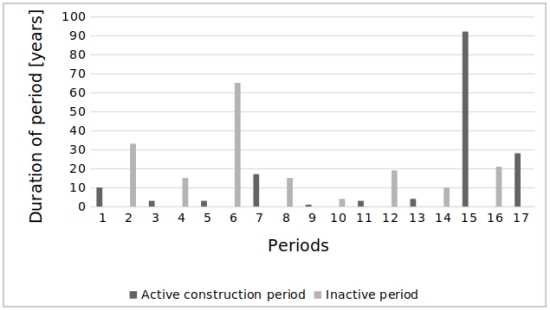
Figure 3: Active and inactive periods of the construction of the Canterbury Cathedral
Counting the occurrence of active periods from longer to shorter ones results in Figure 4.

Figure 4: Distribution of active periods in the construction of the Canterbury Cathedral
Doing the same for inactive periods results in Figure 5.

Figure 5: Distribution of inactive periods in the construction of the Canterbury Cathedral
Further data for Osnabrück and Utrecht Cathedral is taken from Vroom [13]. Periods in which funding is spent on construction and furnishing are counted. The results for all three data sets can be seen in Figure 6 for the active years and in Figure 7 for the inactive years for all three cathedrals. It can be seen that the length of the vast majority of construction periods falls between 1 and 30 years. Longer construction periods, however, exist (between 60 and 70 years and 90 to 100 years).
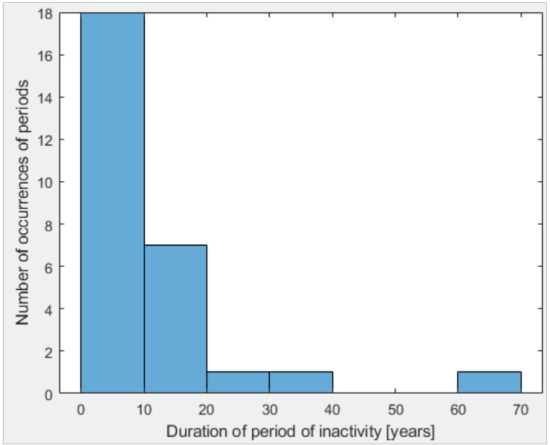
Figure 6: Distribution of active constructions periods for Canterbury, Osnabrück, and Utrecht Cathedral
A similar distribution is obtained for inactive periods, where the vast majority of periods falls between 1 and 40 years.

Figure 7: Distribution of inactive periods for Canterbury, Osnabrück, and Utrecht Cathedral
Fitting both distributions with a power law and exponential curve leads to an R² of 0.97 and 0.99 for active periods and similarly, 0.97 and 0.99 for periods of inactivity. Such distributions might be linked to the probabilistic distribution of weather phenomena such as drought. If there is a correlation between the two, this would confirm Scott’s argument that funding uncertainties are linked to the occurrence of harmful weather conditions, which can be considered random [5].
To summarize, the results imply that active construction periods of cathedrals typically had a duration between 1 to 30 years with periods of inactivity of similar length between them. Only in rare cases are active and inactive periods of longer duration observed. This confirms that cathedrals were not built continuously until completion, except for rare cases such as Notre-Dame de Paris.
5. Were investments continuously provided?
A common conception within the space domain seems that cathedral building was financed by the public in the most general sense. Fortunately, there are several publications that took an in-depth look into the financing of cathedral-building in the Middle Ages. Kraus [14] analyzes the economics of cathedral-building and identifies factors that have contributed to a relatively short building duration. There are factors which pertain to specific stakeholders, such as a strong commitment by the ecclesial family, which was by far obvious. Some bishops had no interest in cathedral-building and did not commit personal funds to the undertaking. In the seminal book “Financing Cathedral Building in the Middle Ages” [13] Wim van Vroom identifies numerous funding sources for cathedrals that were built north of the Alps, notably the bishop, chapter, pope, king or lord, municipalities, and the faithful in general.
Interestingly, funds from the bishop and chapter were only important when construction was initiated. On the long run, the contributions from the faithful of the diocese comprised the majority of the funds for construction. As the faithful of the diocese were a large and geographically distributed group, systematic and long-term fundraising campaigns were organized. The two main incentives provided were indulgences and relic worshipping. Indulgence trade became a huge economic activity, and relic worshipping was organized systematically to increase its efficiency. These two activities were accompanied by collecting campaigns within the diocese.
An interesting aspect is what fraction of total economic activity has been devoted to cathedral-building. Lopez [16] argues that the poor performance of urban economies north of the Alps compared to those in Italy was due to the large resource consumption of cathedrals. Vroom demonstrates that this thesis cannot be maintained and demonstrates that the average expenditures for the cathedral at Utrecht, amounted to the equivalent of the wages of 81 unskilled workers its construction from 1395 to 1527 [13]. Values of the same order of magnitude are displayed by Vroom for the Exeter Cathedral, Osnabrück Cathedral, Segovia, Sens, and Troyes Cathedral. These yearly expenses were far below those of palaces, castles, and fortifications. Hence, cathedral-building seems to be far less resource-consuming than one might expect.
Regarding the financial stability of cathedral-building, Vroom concludes that “Observed over the long term, the general pattern of cathedral fabric expenditures paints a picture of instability” [12, p.462] “In Durham, one chronicler tells us, the pace of construction in the early twelfth century rose and fell with the magnitude of the offerings made there.”[12, p.115] Scott [5] ties instabilities in cathedral funding ultimately to the instability of agricultural yield in the Middle Ages, the main source of income. Weather anomalies such as droughts could severely impact income, which then reduced the amount of funding available for cathedrals.
However, over time, mechanisms were put in place to stabilize cathedral financing. During the thirteenth century, a church office, the vestry, was created for managing the fabric. The vestry was administered by the cathedral chapter. Bishops and canons were then “obliged to give it a fixed proportion of the church income” providing at least some stability to financing cathedral construction [6, p.272]. Furthermore, “Sometimes, these miracles were connected with the building works.” [12, p.116]
Hence, financing for cathedrals was far from stable, although mechanisms were developed over time to mitigate these risks, notably via establishing the vestry, which actively managed the cathedral fabric.
6. Discussion
The previously presented results confirm that cathedral building cannot serve as an example for a successful, continuous, large-duration project. The results seem to imply something far more interesting. Cathedral building was confronted with an “extreme complexity of the project, the lengthy period of time required for construction, and the repeated interruption of the building process” [5, p.140]. These are characteristics, which are often ascribed to space programs [18]. In the following, I will discuss what mitigation strategies cathedral builders used and how these strategies might be transferred to the context of space programs.
Extensibility of the cathedral architecture
As Lopez [15, p.273] describes, cathedrals needed to provide the possibility for church service throughout their whole construction period. “Cathedrals-in-progress were given temporary wooden roofs, and makeshift services were conducted in these half-built structures.” “These services were separated from the building work by temporary screens, some of them rather robust structures that were never subsequently removed.” The ability of the cathedral to enable church service throughout its construction was probably crucial in sustaining construction work over decades and centuries. At any point, the church could be used for its intended purpose. In today’s marketing terms, one can talk about a minimum-viable product (MVP) (cathedral that allows for church service) to which new features (new elements of the cathedral) are added. There are elements of the cathedral that are obviously modular such as the tower(s), the spire, and chapels. These elements can be added without interfering with church services. Fig. 1 shows the floorplan of Chartres Cathedral, where the side chapels can be seen as the half-circles and rectangles on the top and on the left.
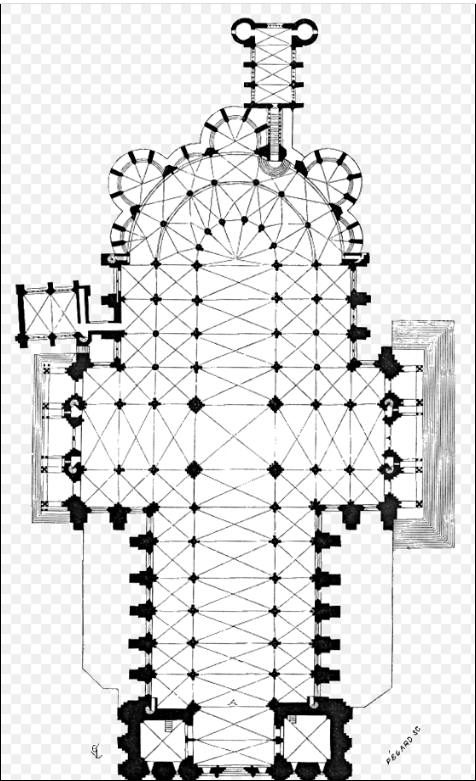
Figure 8: Floorplan of the Chartres Cathedral (Wikipedia)
Scott [5, p.142] even goes further than that and argues that modularity was a key enabler for cathedral building over its construction duration of decades to centuries. Modularity was not only present in the large elements (tower, nave, etc.) but also in sub-elements such as columns, arcs, etc. This allowed for a sub-division of work down to individual stones, robust against various uncertainties and interruptions in construction. Interestingly Scott takes inspiration from Herbert Simon regarding modularity and how it is able to mitigate uncertainties.
Trans-generational transfer of technological capabilities
According to Billington and Mark [19], “the great cathedrals were constructed by relatively well-paid, highly skilled teams of masons and carpenters, with supporting staffs that included the apprentices who insured the continuity of skills” [6, p.38] According to White [20], “we see a sublime fusion of high spirituality and advanced technology.” Indeed, it seems that the investments from the faithful were channelled into one of the few areas during the Middle Ages where considerable technological progress was made by constantly developing and transferring skills in diverse art forms but also civil engineering and architecture [21]. One notable document in this respect is the only written first-hand account of the engineering and architecture behind Gothic cathedrals, is the Carnet of Villard de Honnecourt [22].
Furthermore, just to provide one example for the engineering ingenuity of the Middle Ages: The flying buttresses were introduced as structural support for very tall vaulted structures against horizontal loads such as winds [19,23]. Little seems to be known about the process of how knowledge was transferred between generations of builders [5,11]. Turnbull [11] argues that no global and accurate plan existed, but low-level templates were used. Scott [5] discusses the possibility that modularity allowed for continuity in building activity in the absence of a master plan. Hence, it can be speculated that cathedral building was robust against knowledge loss by providing a modular architecture where new contributions could be “plugged in”.
7. Cathedrals and starships: Lessons learned?
I will now suggest some conclusions from the cathedrals to long-term, large-scale space projects, exemplified by the starship.
From the previous sections we can summarize the following characteristics of cathedral-building as a long-term, large-scale engineering project:
- Value-delivery via a minimum viable product: The way cathedrals were built ensured that the main function of the cathedral, church service could be performed throughout the whole construction period. Hence, continuous value delivery was ensured.
- Project finance: Cathedral-building was subject to instabilities in available funding. However, organizational innovation mitigated this risk. Formal institutions and mechanisms were created to increase the reliability of cash flows. Fundraising campaigns along with spiritual “products” such as indulgences, relics, and miracles were vital elements of the financing strategy.
- Extensibility: The architecture, in the sense of the components and relationships between these, enabled the continuous addition of new components (towers, chapels, flying buttresses) to extend the church. Hence, the difficulty in determining if a cathedral construction is ever “finished”.
- Knowledge transfer: Knowledge transfer by or between key personnel such as architects and artisans, was facilitated by the dissemination and documentation of their knowledge. Furthermore, this workforce was highly mobile, enabling the cross-fertilization of building projects in different regions and even countries. These enabled not only the transfer of explicit knowledge in the form of documents but also the transfer of tacit knowledge.
- Stakeholder management: The network of stakeholders around a cathedral construction project contained different entities such as the ecclesiarchy, municipalities, representatives of worldly powers, the construction workforce, and the faithful in the diocese. The management of the diverse value flows, and notably, financial flows seem to have been as complex as the physical cathedral.
- Expenditures: The financial and human resources spent on cathedrals were much smaller than for palaces, castles, and fortifications. The expenditures were typically on the order of 10s to 100s of annual wages with large gaps between periods of activity [13].
From these characteristics, I can now speculate on lessons to be learned for future long-term, large-scale space projects. Rather than suggesting specific solutions, I will discuss general principles and how they might translate into solutions for such projects:
- Modular architecture: Modular architectures do not only exist for buildings. Modularity also exists for knowledge, software, etc. Cathedrals somehow provided interfaces where future builders could continue their work, such as wall and roof sections. Hence, on the one hand, they could build on previous work or, on the other, they could do so efficiently via building on these interfaces. Furthermore, this approach left important degrees of freedom, so that future builders had relative freedom in their designs. Today, we would call such an architecture an open architecture. Modules can be integrated via well-defined interfaces. An open architecture approach ensures flexibility and extensibility, able to absorb uncertainties. In the context of starship development, subsystem technologies could be matured independently but with a clear definition of interfaces and constraints. Such an approach would ensure that these technologies can be integrated at some point in the future. “Interfaces” in this case should be understood broadly, such as the fundamental compatibility of technologies, information exchange between organizations which develop the technologies, etc.
- Value delivery / minimum viable product: Even for long-term projects, thinking about how intermediate value can be delivered is important. For example, for interstellar travel, an intermediate version of the propulsion system could be used for interplanetary travel, as has been suggested for laser sail propulsion [24–26].
- Financial stability: Funding for a starship project is likely to be unstable, which has been demonstrated repeatedly for past and current space programs. What institutional and financial mechanisms could be developed to mitigate the risk from instability? The example of the cathedral has shown that financial stability was established over time via institutions. Recently, foundations and non-profits have emerged which provide funding for research on interstellar travel such as the Breakthrough Foundation and the Limitless Space Institute. Compared to the Middle Ages, a vast number of mechanisms and instruments for financing long-term projects exists today.
In short, cathedral-building can indeed be considered an enormous feat, precisely because those cathedral-builders were facing many problems we and future starship-builders will also face: uncertainties in funding, interruptions, trans-generational knowledge transfer issues, stakeholders who want to see results quickly. They used, deliberately or not, approaches for solving these problems, which we would today call minimum viable product, modular architecture, and institutionalized fundraising. Such an interpretation of cathedral-building puts less emphasis on inspiration and visionary thinking as their conditions for success but highlights the role of mechanisms, institutions, and the structure of the building. How can we use these principles for long-term space programs? The one thing we know from those gigantic monuments is that multi-century programs are possible. For us, there are no excuses for why we could not do what they did.
References
[1] M. Schiller, Benefits and Motivation of Spaceflight, (2008).
http://mediatum2.ub.tum.de/?id=654918 (accessed December 31, 2016).
[2] M. Griffin, Space exploration: real reasons and acceptable reasons, Quasar Award Dinner, Bay Area Houst. Econ. (2007).
https://www.nasa.gov/pdf/168084main_griffin_quasar_award.pdf (accessed December 31, 2016).
[3] K.A. Ehricke, Lunar industrialization and settlement-Birth of polyglobal civilization, in: Lunar Bases Sp. Act. 21st Century, 1985: p. 827.
[4] B. Bercea, R. Ekelund, R. Tollison, Cathedral Building as an Entry?Deterring Device, Kyklos. 58 (2005) 453–465.
[5] R. Scott, The Gothic Enterprise: A Guide to Understanding the Medieval Cathedral, 2011.
[6] P. du Colombier, Les chantiers des cathédrales: ouvriers, architectes, sculpteurs, Paris, 1973.
[7] J. Gimpel, C. Barnes, The cathedral builders, Pimlico, 1983.
[8] D. Turnbull, The Gothic Enterprise: A Guide to Understanding the Medieval Cathedral, Contemp. Sociol. 34 (2005) 40.
[9] D. Turnbull, Masons, tricksters and cartographers: Comparative studies in the sociology of scientific and indigenous knowledge, Taylor & Francis, 2000.
[10] D. Turnbull, Inside the gothic laboratory:” local” knowledge and the construction of Chartres cathedral, Thesis Elev. 30 (1991) 161–174.
[11] D. Turnbull, The ad hoc collective work of building gothic cathedrals with templates, string, and geometry, Sci. Technol. Hum. Values. 18 (1993) 315–340.
[12] Y.C. Chiu, An Introduction to the History of Project Management: From the earliest times to AD 1900, Eburon Uitgeverij BV, 2010.
[13] W. Vroom, Financing Cathedral Building in the Middle Ages, Univ. Chicago Press Econ. Books. (2010). https://ideas.repec.org/b/ucp/bkecon/9789089640352.html (accessed January 4, 2017).
[14] H. Kraus, Gold was the mortar: the economics of cathedral building, Routledge & Kegan Paul Books, 1979.
[15] J. James, Funding the Early Gothic Churches of the Paris Basin, Parergon. 15 (1997) 41–81.
[16] R. Lopez, Économie et architecture médiévales: Cela aurait-il tué ceci?, Ann. Hist. Sci. Soc. (1952). http://www.jstor.org/stable/27578887 (accessed January 5, 2017).
[17] P. Ball, Universe of Stone: A Biography of Chartres Cathedral, Harper Collins, 2008.
[18] E. Rebentisch, E. Crawley, G. Loureiro, J. Dickmann, S. Catanzaro, Using stakeholder value analysis to build exploration sustainability, in: 1st Sp. Explor. Conf. Contin. Voyag. Discov., 2005: p. 2553.
[19] D. Billington, R. Mark, The cathedral and the bridge: Structure and symbol, Technol. Cult. (1984). http://www.jstor.org/stable/3104668 (accessed January 4, 2017).
[20] L. White, Dynamo and virgin reconsidered, Am. Scholar. (1958).
[21] H. van der Wee, Review: De financiering van de kathedraalbouw in de middeleeuwen, in het bijzonder van de dom van Utrecht by WH Vroom, J. Soc. Archit. Hist. (1984). http://jsah.ucpress.edu/content/43/3/267.abstract (accessed January 4, 2017).
[22] R. Bechmann, Villard de Honnecourt: la pensée technique au XIIIe siècle et sa communication, (1991). http://www.openbibart.fr/item/display/10068/1052496 (accessed January 4, 2017).
[23] R. Mark, H. YUN?SHENG, High Gothic Structural Development: The Pinnacles of Reims Cathedral, Ann. New York Acad. (1985).
http://onlinelibrary.wiley.com/doi/10.1111/j.1749-6632.1985.tb14578.x/abstract (accessed January 4, 2017).
[24] P. Lubin, A Roadmap to Interstellar Flight, J. Br. Interplanet. Soc. 69 (2016).
[25] A.M. Hein, N. Perakis, T.M. Eubanks, A. Hibberd, A. Crowl, K. Hayward, R.G. Kennedy III, R. Osborne, Project Lyra: Sending a spacecraft to 1I/’Oumuamua (former A/2017 U1), the interstellar asteroid, Acta Astronaut. (2019).
[26] A. Hibberd, A.M. Hein, Project Lyra: Catching 1I/’Oumuamua–Using Laser Sailcraft in 2030, ArXiv Prepr. https://arxiv.org/pdf/2007.03654.pdf (2020).

Planetary Collisions and their Consequences
What happens when worlds collide? The question recalls the novel by Philip Wylie and Edwin Balmer, which appeared as a serial in Blue Book magazine beginning in 1932 and concluded the following year. The book version of When Worlds Collide appeared in 1933, and the movie, directed by Rudolph Maté, came out in 1951 in a George Pal production. I would wager that most Centauri Dreams readers have seen it.
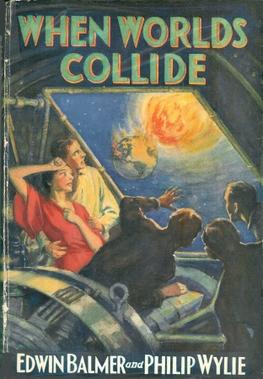
Let’s hope we never share such a fate, but it’s likely that collisions are commonplace in the late stages of planet formation, and many researchers believe that Earth’s Moon was the result of the collision of our planet with a Mars-sized planet about 4.5 billion years ago. Scientists at Durham University and the University of Glasgow have recently developed computer simulations tracking atmosphere loss during such collisions using the COSMA supercomputer, which is part of the DiRAC High-Performance Computing facility in Durham.
The work involves smoothed particle hydrodynamics (SPH) simulations to model giant impacts. The planets are modeled as digital ‘particles’ and run through a process of evolution under different conditions of gravity and pressure. This work appears to be the first time the erosion of thin atmospheres has been studied with full 3D, high-resolution simulations of giant impacts at various impact angles and speeds, injecting a range of atmospheric masses for the proto-Earth. The work takes advantage of a program called SWIFT to model hydrodynamics and gravity.
We can get a look at the results in a new paper in the Astrophysical Journal. The authors have created cross-section animations of the early stages of such collisions, modeling not only head-on strikes but grazing impacts like the one thought to have produced our Moon. They likewise model fast as well as slow giant impacts using 100 million particles. As you can see in the image below, these are color-coded for material as well as internal energy.
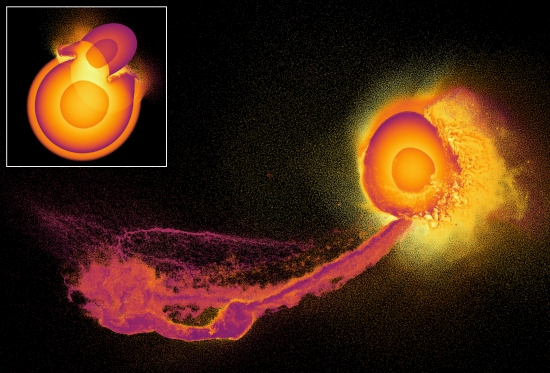
Image: Still image cross-section showing the impact (inset) and aftermath (main picture) of a 3D simulation of a giant planetary impact using 100 million particles, coloured by their internal energy, similar to their temperature. Credit: Dr Jacob Kegerreis, Durham University.
Jacob Kegerreis (Durham University) places the work in context:
“We know that planetary collisions can have a dramatic effect on a planet’s atmosphere, but this is the first time we’ve been able to study the wide varieties of these violent events in detail. In spite of the remarkably diverse consequences that can come from different impact angles and speeds, we’ve found a simple way to predict how much atmosphere would be lost. This lays the groundwork to be able to predict the atmospheric erosion from any giant impact, which would feed into models of planet formation as a whole. This in turn will help us to understand both the Earth’s history as a habitable planet and the evolution of exoplanets around other stars.”
We learn that the type of impact tells the tale in terms of how much atmosphere is lost. Higher-speed and/or head-on impacts create the greatest atmospheric loss, sometimes completely destroying not just the atmosphere but parts of the planet’s mantle layer beneath the crust. Earth’s likely grazing impact is the kind that disrupts but does not destroy the atmosphere. What actually happened on Earth during this period is not known, but the researchers believe our planet lost somewhere between 10 and 50 percent of the atmosphere.
Atmospheric survival is not assured in the early planet-forming environment, a time when planetary embryos collide after their accretion from a proto-planetary disk. To acquire an atmosphere, planets accrete gases from surrounding materials as well as from impacting volatiles, eventually outgassing volatiles from within. That means an infant rocky world must deal with not only the radiation pressure of its star but small and large impacts. In the case of Earth, we have Moon-formation scenarios but little information about the proto-Earth’s crust, ocean or atmosphere. Consider the evidence from early Solar System materials:
Focusing on the atmosphere, the Earth’s volatile abundances are remarkably different from those of chondrites (Halliday 2013), which act as a record of the condensable components of the early Solar System. Specifically, nitrogen and carbon are depleted compared with hydrogen, which could be explained by the loss of N2 and CO2 with an eroded atmosphere while retaining H2O in an ocean (Sakuraba et al. 2019). Unlike the abundances, the isotope ratios match those of primordial chondrites. Hydrodynamic escape – driven by XUV radiation from the star or heat from the planet below – preferentially removes lighter isotopes, while impacts remove bulk volumes of atmosphere. This suggests that impacts (not necessarily giant ones) are the primary loss mechanism, driving fractionation by removing more atmosphere than ocean while preserving isotope ratios…
Interestingly, there is at least one paper positing two occasions where Earth lost its atmosphere based on the relative abundances of helium and neon in mantle reservoirs of different ages. If giant impacts are relatively common, this would ensure that exoplanets in mass ranges between Earth and Neptune would show wide variation in atmospheric masses. Impacts, in other words, take precedence over irradiation and photoevaporation, according to the authors.
In Earth’s case, the ‘big whack’ that created the Moon may have been only part of the story:
…only around 10% of the atmosphere would have been lost from the immediate effects of the collision. This suggests that the canonical impact itself cannot single-handedly explain the discrepancies between the volatile abundances of the Earth and chondrites by eroding the early atmosphere, compared with alternative, more-violent Moon-forming scenarios. However, the caveat of ‘immediate’ erosion is important, because we have here only considered the direct, dynamical consequences of a giant impact.
The paper goes on to point to the thermal effects of such an impact, producing significant atmosphere erosion. Interestingly, the presence of an ocean can enhance atmosphere loss, creating the higher figure of 50 percent loss mentioned earlier. This work makes it clear how little we know about atmospheric loss, but it does produce a scaling law for total atmospheric erosion for a variety of scenarios involving Mars-sized impactors.
Promising targets for future study include: investigations of different impactor and target masses; extensions to both more massive and even thinner atmospheres; the inclusion of an atmosphere on the impactor as well as the target; and testing the dependence on the planets’ materials, internal structures, and rotation rates. This way, robust scaling laws could be built up to cover the full range of relevant scenarios in both our solar system and exoplanet systems for the loss and delivery of volatiles by giant impacts.
The paper is Kegerreis et al., “Atmospheric Erosion by Giant Impacts onto Terrestrial Planets,” Astrophysical Journal Vol. 897, No. 2 (15 July 2020). Abstract / preprint.

SPOCK: Modeling Orbital Scenarios around Other Stars
In addition to being a rather well-known character on television, SPOCK also stands for something else, a software model its creators label Stability of Planetary Orbital Configurations Klassifier. SPOCK is handy computer code indeed, determining the long-term stability of planetary configurations at a pace some 100,000 times faster than any previous method. Thus machine learning continues to set a fast pace in assisting our research into exoplanets.
At the heart of the process is the need to figure out how planetary systems are organized. After all, after the initial carnage of early impacts, migration and possible ejection from a stellar system, a planet generally settles into an orbital configuration that will keep it stable for billions of years. SPOCK is all about quickly screening out those configurations that might lead to collisions, which means working out the motions of multiple interacting planets over vast timeframes. To say this is computationally demanding is to greatly understate the problem.
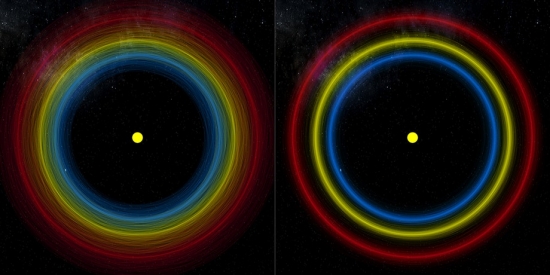
Image: While astronomers have confidently detected three planets in the Kepler-431 system, little is known about the shapes of the planetary orbits. The left-hand image shows many superimposed orbits for each planet (yellow, red and blue) consistent with observations. Using machine learning methods, researchers removed all unstable configurations that would have resulted in planetary collisions and would not be observable today, leaving only the stable orbits (right-hand image). Using previous methods, this process would have taken more than a year of computing time. The new method instead takes just 14 minutes. Credit: D. Tamayo et al./Proceedings of the National Academy of Sciences 2020.
Thus we rule out dynamically unstable possibilities in, compared to older methods, the blink of an eye, a useful fact for making sense of planetary systems we can observe, and possibly giving us information about the composition of some of these worlds. Bear in mind that while we’ve discovered more than 4,000 planets around other stars, almost half of these occur in multi-planet systems, so understanding orbital architectures is vital.
The lead author on this work is Daniel Tamayo, a NASA Hubble Fellowship Program Sagan Fellow in astrophysics at Princeton. As you would expect, Tamayo and his co-authors relish the resonance of the acronym, as witness the note that closes their paper:
We make our ≈ 1.5-million CPU-hour training set publicly available (https://zenodo.org/record/3723292), and provide an open-source package, documentation and examples (https://github.com/dtamayo/spock) for efficient classification of planetary configurations that will live long and prosper.
A good choice, and an acronym with almost as much going for it as my absolute favorite of all time, TRAPPIST (Transiting Planets and Planetesimals Small Telescope), which contains within it not only a description of the twin telescopes but a nod to some of the world’s best beers (the robotic telescopes are operated from a control room in Liège, Belgium).
Thus we move from brute force calculations run on supercomputers to machine learning methods that quickly eliminate unstable orbital configurations, replacing tens of thousands of hours of computing time with the time it takes to quaff a Westmalle Tripel (well, maybe a Westmalle Dubbel). Configurations that would, over the course of a few million years, result in planetary collisions — the team calls these ‘fast instabilities’ — are identified.
The paper notes the relevance of the work to compact systems and the ongoing observations of TESS:
In the Kepler 431 system with three tightly packed, approximately Earth-sized planets,we constrained the free eccentricities of the inner and outer pair of planets to both be below 0.05 (84th percentile upper limits). Such limits are significantly stronger than can currently be achieved for small planets through either radial velocity or transit duration measurements, and within a factor of a few from transit timing variations (TTVs). Given that the TESS mission’s typical 30-day observing windows will provide few strong TTV constraints [Hadden et al., 2019], SPOCK computationally enables stability constrained characterization as a productive complementary method for extracting precise orbital parameters in compact multi-planet systems.
SPOCK can’t provide a solution to all questions of long-term stability, as Tamayo acknowledges, but by identifying fast instabilities in compact systems, where the issues are the most obvious, it can sharply reduce the options and allow astronomers to focus on likely solutions. Freeing up a significant amount of computer time for other uses is a collateral benefit.
The paper is Tamayo et al., “Predicting the long-term stability of compact multi-planet systems,” Proceedings of the National Academy of Sciences July 13, 2020 (preprint).


